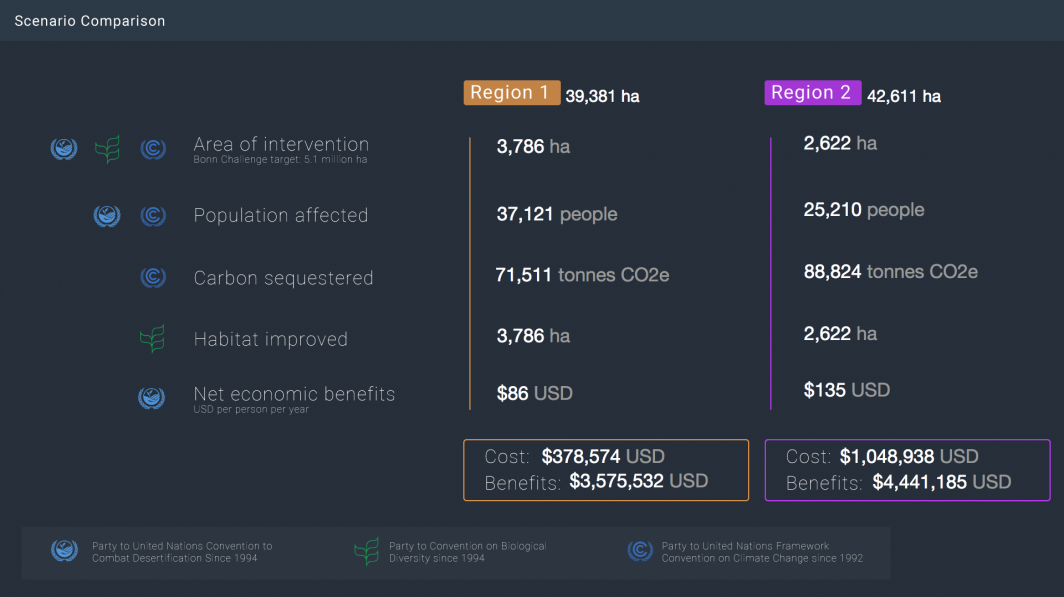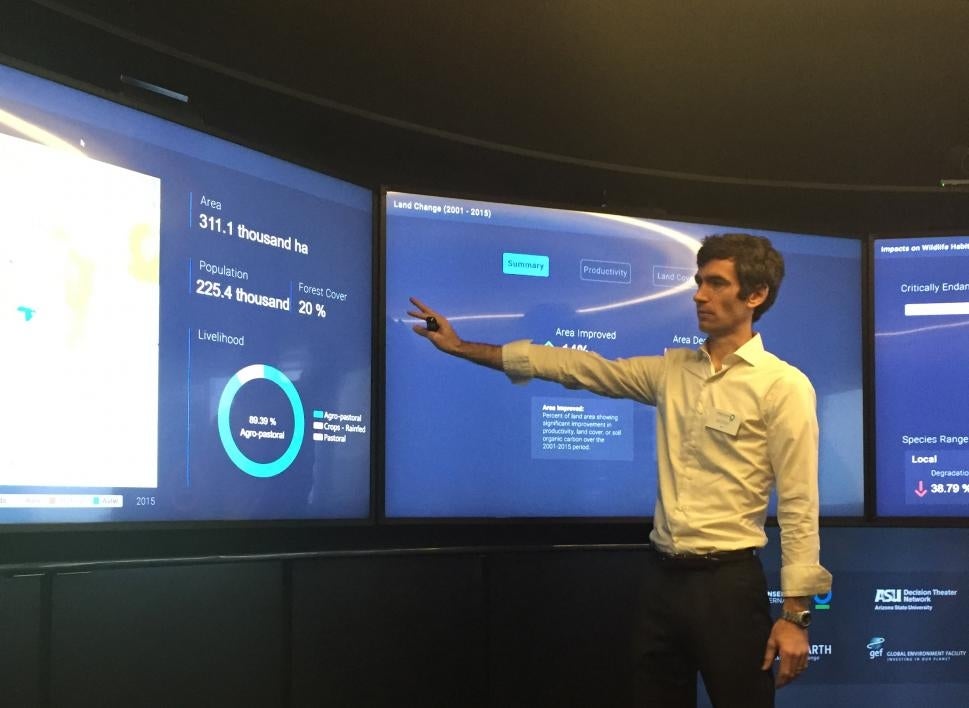Conservation International partners with ASU’s Decision Theater on innovative tool

Climate change. Species loss. Pollution.
These are well-known consequences of economic development threatening human and ecological health. International efforts to mitigate these threats are also familiar, including reducing greenhouse gas emissions, protecting endangered animals and cleaning our air and waterways.
However, perhaps the most crucial threat is also the most neglected — land degradation.
Approximately 1.3 billion people depend on polluted or degraded agricultural land. This leads to reduced agricultural productivity and access to water and increased carbon emissions. It is a complex problem with serious implications for food security, health and sustainable development.
Arizona State University and Conservation International are working together to solve it.
On Oct. 17–18, ASU and Conservation International unveiled a new tool designed to help decision-makers understand the type and extent of land degradation in a given geographical area and the costs and benefits associated with specific policy interventions. This tool was designed by the Decision Theater and visualized across their immersive, seven-screen environment.
”The Decision Theater environment allows groups with multiple perspectives and anchored positions to objectively examine the trade-offs of different outcomes,” explained Rahul Salla, Decision Theater associate director and technical director. “Interacting with the model in the Decision Theater, they can make their own discoveries as they investigate possible futures, leading to more informed decisions.”
For several months, the software developers and program managers at Decision Theater worked hand-in-hand with Conservation International experts to design and build this tool. The interactive data visualization integrates information derived from Trends.Earth, an existing tool funded by the Global Environmental Facility and already used by 146 countries to analyze land changes.
The Decision Theater convenes decision-makers in a collaborative, visually immersive, information-rich environment. The objective is to create better, more informed decisions involving complex problems. They model, simulate and visualize data from disparate sources to provide a complete vision of a problem and the system surrounding that problem.
“The experience of the DTDecision Theater team made it possible to build a tool integrating massive quantities of data needed to identify areas for restoration in a visualization that is still usable and accessible to nonexperts,” said Alex Zvoleff, Conservation International senior director of resilience science. “This allows users direct access to both the underlying data, as well as the simplified summaries and cost/benefit calculations that are necessary for decision-making,”
This tool was presented before a collection of Conservation International board members, industry leaders and philanthropists at the ASU Barrett and O’Connor Center in Washington, D.C. An ASU-hosted reception immediately followed.
“This is a prime example of how a nonprofit organization and a higher education institution can work together to craft solutions,” said Amy Scoville-Weaver, ASU-Conservation InternationaI relationship manager. “By pooling our scientific expertise and leveraging our own strengths, we are able to work together to create something new with direct implications for change.”
The United Nations Convention to Combat Desertification — to which 196 countries are signatories — is committed to achieving land degradation neutrality, or stable or improved land health, by 2030, a goal that requires a combination of avoiding and reducing land degradation and restoring degraded lands. ASU and CI will continue to work together to explore suitability and applications of the Trends.Earth and Decision Theater tool to support countries in achieving this target.
ASU has partnered with Conservation International since 2016 to make measurable advances on conservation and to train the next generation of conservation leaders. For more questions on the partnership, please contact Amy Scoville-Weaver.
Written by Holly Smith, Decision Theater
More Science and technology

Applied Materials invests in ASU to advance technology for a brighter future
For nearly 60 years, global giant Applied Materials has been hard at work engineering technology that continues to change how…

Meet ASU engineering students who are improving health care, computing and more
Furthering knowledge of water resource management, increasing the efficiency of manufacturing point-of-care health diagnostic…

Turning up the light: Plants, semiconductors and fuel production
What can plants and semiconductors teach us about fuel production?ASU's Gary Moore hopes to find out.With the aim of learning how…




